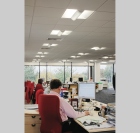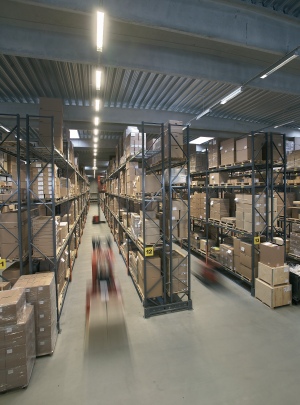Shedding more light on the Golden Rule

Energy-saving projects that want to take advantage of the Green Deal must comply with the ‘Golden Rule’. Neil Parrott of Riegens Lighting explains the significance of this for lighting.
When it comes to evaluating the potential benefits of energy-saving initiatives it makes sense to consider the various schemes that are available to help meet the capital costs of such projects. There have been a number of such initiatives in recent years, and the one that is currently in the spotlight is the Green Deal.
Most of the publicity around the Green Deal has related to improving the energy performance of residential properties, so operators of commercial and industrial buildings may not have realised they also qualify. This is an area where the guidance of the building-services engineer can prove invaluable.
One obvious area for energy improvements is in lighting and its control, which is acknowledged in the Green Deal literature. Again, there tends to be more emphasis on domestic properties, but for any type of building the important thing is that the project meets the so-called ‘Golden Rule’.
The Golden Rule requires that the expected financial savings resulting from installing measures must be equal to or greater than the cost of repayment over the term of the Green Deal plan. The repayment period could be the lifetime of the measure or a specified payback period.
This is an important consideration because the Golden Rule puts the emphasis of the payback on the energy saved, which has a bearing on the choice of lighting technology that is used.
For example, many people nowadays think of LED light sources as the be-all and end-all for improving energy efficiency — and they are certainly capable of delivering impressive energy savings in the right applications. However it is important to assess each project in its own right and to take account of other factors, such as the potential for funding through the Green Deal.
To illustrate this point it is interesting to compare the costs of LED lighting with high-efficiency T5 fluorescent light sources in luminaires that have been optimised for T5 — and combined with effective controls.
The first consideration is the cost of the LED lamps and luminaires. LED lamps typically cost 10 times more than a linear or compact fluorescent lamp. LED luminaires also tend to be expensive compared to fluorescent luminaires, simply because of the economies of scale in relation to the volumes sold.
In the light of this high price differential, it takes a significant reduction in energy costs to deliver a fast payback based on energy alone. In this respect, the type of lamp that is being replaced in the refurbishment is clearly important. For example, if a 50 W halogen lamp is being replaced with a 7 W LED the reduction in installed electrical load will deliver an impressive return on investment.

However, the situation will be different when comparing LEDs with the more efficient types of fluorescent lighting. For example, there are some 600 mm-square LED fittings on the market that will consume as much power as a 600 mm-square fluorescent fitting.
In such cases, the financial savings on reduced energy consumption will not be so great, and the case for spending considerably more on LED lighting cannot be supported on this basis. In such cases, the return on investment argument typically focuses on the reduced maintenance costs that result from using longer-life lamps.
However, the Green Deal is all about reducing the UK’s energy consumption and carbon emissions. So the emphasis is very much on energy saving when it comes to satisfying the Golden Rule in terms of payback period.
It’s also worth noting that there are special premium T5 lamps that can provide the same 45 000 h life claimed by some LED manufacturers, and even standard T5 lamps will deliver nearly 20 000 hours. So this raises the question as to whether it is worth spending so much more on LED lighting to miss out one re-lamping cycle — if, indeed, the lighting will be used for that long.
This is not an attack on LED lighting but it serves to illustrate that where payback through energy savings is the order of the day there may be more suitable alternatives that will make it easier to satisfy the Green Deal’s Golden Rule.
For instance, if 400 W SON high-bay fittings are replaced with four 55 W T5 fittings, the light output will be comparable and there will be an immediate reduction in energy consumption. It will also facilitate improved control, so that even greater energy savings can be achieved to deliver an even faster payback.
Clearly, there may be many building operators wishing to take advantage of the Green Deal, and for some it will provide significant benefits. The role of the building-services engineer will be to advise them on the best options for maximising those benefits.
Neil Parrott is senior lighting designer with Riegens Lighting.








